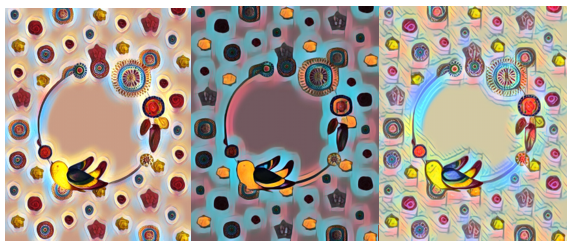First, let me state clearly that I am not an attorney and if are concerned about your own copyright issues you should contact someone who can give you detailed and specific legal advice. That being said, there are some misunderstandings that we can address here that may help you avoid a problem in the future.

While some of these misconceptions may have a kernel of truth to them, they’re mostly inaccurate. Copyright law is complex, and there are a lot of nuances that people often don’t know about.. But some of these are common sense and can help you avoid your store being closed or reputation harmed.
If It’s On The Internet, It’s Safe To Use
False: Nothing on the internet is free and safe to use unless it has been listed under the Common Creative License. You cannot reproduce anything you found on the internet.
This also includes posts you may see on Social Media platforms. Don’t copy posts, images, videos or quotes–even though you see others doing the same thing. If you see something on the internet that amuses, intrigues or interests you, you can post a link so others can view it.
The original meme or post may contain copyrighted photos, drawings or quotes. And when you copy and post it, you (although perhaps innocently) violate copyright.
Many years ago, I had pictures of myself in my classroom posted on my teaching blog. I was reading in a Facebook group how someone was taking pictures and products from teaching sites and posting them on their own site. So, while I didn’t believe this applied to me, just for fun I put my photo in Google search. And there I was. I was posted on the home page of a person who coached others and below my photo was a testimonial from “me” saying how much I had enjoyed the coaching experience.
I immediately issued a cease and desist order and threatened legal action and it was removed. I have had resources posted on other websites for free and had blog posts reused and posted. It happens because others really believe if it’s on the internet they can use it freely.
Other People Are Doing It
Yes, other people post copyrighted material on ETSY and sell those items. On every platform that sells materials, people are selling Disney items and all sorts of popular items. BUT, it is still illegal.
I sell items on Teachers Pay Teachers and this is a constant discussion in Facebook groups. Teachers complain that they received a take down notice of their product featuring Mickey Mouse but see others doing it. Here are a few current examples:

I want to put on my mother hat and say: “If you saw other people jumping off a cliff would you do it? ” It is only a matter of time before these products and many like it are removed. And confused teachers will be complaining that they are losing income because their products have been unfairly taken down.
Does ETSY also have products that violate copyright posted? Yes, One of the most obvious violations is buying PLR and posting it to ETSY without changing it. The PLR product pictured below is one that I also purchased. The cover provided was exactly as shown by the three different sellers. And 3 is all I could fit in the photo, there are several more with the same cover–all selling for different amounts.

It’s OK to Copy if I Bought It
False: It depends on the license. It’s illegal to copy content and resell if you purchased your product for personal use. When you buy something with a personal license you cannot copy, rebrand or edit or repackage the product and sell it. It is illegal. If you have a shop on ETSY, you can have your shop closed for a practice of violating copyright.
Even if you purchased a product with a commercial license, you still need to change it in order to list on ETSY or Amazon (KDP). Private Label Rights content is not allowed on either of those sites.
In particular, ETSY prohibits reselling. Products need to be changed in order to be listed and just changing a color or a font probably would not quality as a different product. It needs to look different, and that at least starts with the cover (see photo above). If you have questions, check the ETSY policies.
If It Doesn’t Say “Copyright” Then It is OK to Use
False: Some people believe that the content either needs to use the word “copyright” specifically or use the symbol (@). Years ago, that may have been true, or at least was a gray area. It has also become an urban myth–information that is circulated so often it is believed to be true.
You cannot use copyright material without permission from the holder and this applies to photos and graphic images as well. You cannot use images from newspapers, magazines or even the internet without risking a copyright violation.
It’s OK to Use Copyrighted Material If I Give It Away
False: While not charging for use may limit fines you may be charged, it does not give you the right to use material that you did not produce. This means if you buy products for personal use, you cannot give it away for a lead magnet or freebie to your customers–even if you have a membership.
Once You Have Removed Copyrighted Material You Are Protected From Further Action
False: You are still liable for the initial violation, but by removing it promptly you may have a less severe penalty. A Cease and Desist letter is usually the first action someone takes when they find their copyright has been violated. But if they can establish a monetary loss, they can sue.
How You Can Avoid A Copyright Headache
1. You can get explicit permission in writing for any content you wish to use from the copyright holder. And if you do, keep all documentation in case there is a problem later.
2. For any images, use stock photos or images that use a Creative Commons license. Or for personal use a platform like Canva is great. You can use images for social media posts, sales images and website images. But Canva is very clear that you cannot use PRO images and sell them.
3. Create your own graphics and photos. I take photos of my classroom for various blog posts and product images. I also take pictures and put and those photos thru a filter such as in GoArt. It gives a creative touch.

That is me (on the left). On the right is a Cubism Filter and in the middle, The Rich Colored Filter,
These are covers of a product I recently picked up in a bundle. If you picked up the same bundle, you may recognize the cover or not. The filters recolor and tweak the elements slightly. Not all the filters work for each photo, you need to play a little. However, this is an option to easily recolor your covers of purchased PLR products.

4. Read licenses carefully. Every product you purchase comes with a license of what you can and cannot do. If there is any doubt, just ask. Especially if you have a specific product or idea how you want to use the purchased product.
I saw a set of coloring book elements that I was interested in combining to sell in kids activity books. The product said that it was not to be resold so before I purchased, I sent the person an email and asked if creating ETSY activity books was allowed. She was very happy and said if I followed the Rule of Three, combining at least 3 elements on each page that I was good.
I hope this was helpful. I like to follow the rule, if in doubt don’t do it. This has saved me a lot of problems over the years. If you have any questions–or have another copyright myth to share, drop a comment below or email me at creativeplr2@gmail.com
Looking for more ideas on creating printables? Check out this blog post : FINDING INSPIRATION FOR COLOR PALETTES.